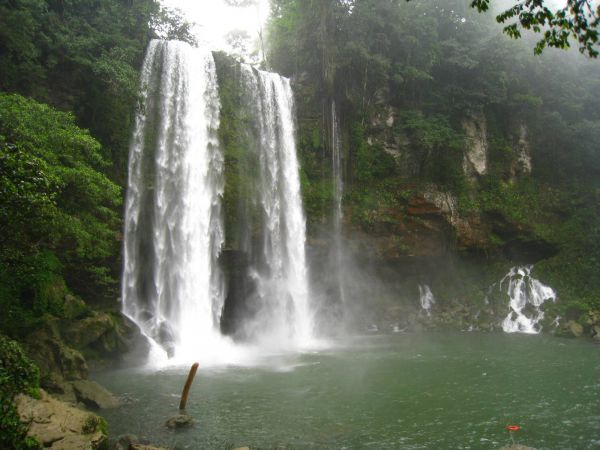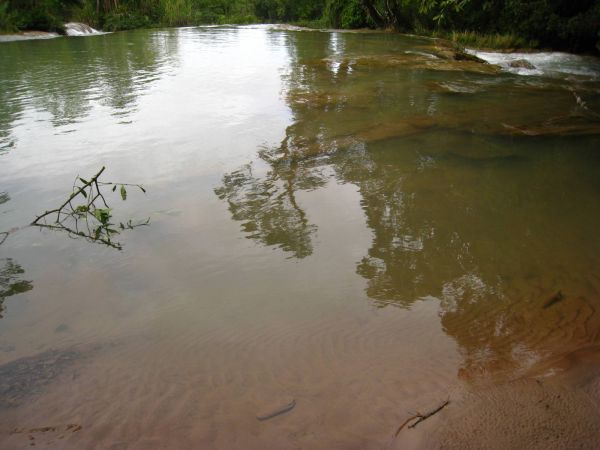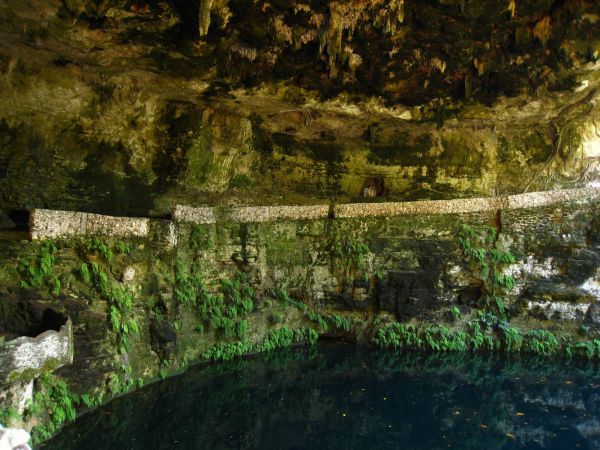
Within the Chiapas state, on the land of the Zapatist Revolutionary Army (EZLN) with the subcommandante Marcos in the front line, we went and got a jungle-nestled Mayan site. We emancipate from the Yucatan peninsula for a couple of days at the edge of the Guatemalan border. From the pleasant town of Palenque we reach the eponymous archaeological site. The city differs from the previous ones as for the style and with the harmonious invasion of the nature. Because, except the core of the ancient Mayan capital, basking in the glow of nice stone buildings, the jungle is everywhere. The trees take roots into the foundations of the edifices driving to a symbiosis between the nature and the archaeological remnants. A visit which is worth misdemeanour, hundreds of kilometers from Cancun.
















In the surroundings of Palenque, two other highlights see their car parks filling up during the day. The first one is the Misol-Ha waterfall, a thin curtain of water, encircled by the same greenery that sheltered the Mayan site and the second one, an amassing of limestone basins which pour into one another. Each point of view looking out onto these short waterfalls invites to a break. Down below, the sun, within its struggle with the clouds, makes shimmer the river when its rays reach the water surface.

























Keyword - nature -
Tuesday 18 November 2008
Palenque: in the heart of the forest
By dorian on Tuesday 18 November 2008, 14:03 - RTW2-Mexico
Thursday 13 November 2008
bathing into the northern cenotes
By dorian on Thursday 13 November 2008, 13:44 - RTW2-Mexico

We leave Cancun for a several-day loop when in each stop Mayan ruins stand. But on the way and to cut down the stifling heat of the day, a network of water-filled sinkholes fed by subterranean rivers offers a bath of salutary coolness. The area around the town of Valladolid gathers three of the most beautiful cenotes, the cenote Zaci in the heart of the city, the cenote Dzitnup Xkeken where the stalactites are reflected in the calm and pure waters of the grottoe and the cenote Samula where a light shaft gushes out from the ceiling and a poplar, settled at the edge of this hole, lets its roots gliding over several meters down to the sapphire-tinted water.
On the road to Chichen Itza, we divert from this aquatic pleasures once for the Balankanche grottoes. This long dimly-lit cavity seeps under the ground in a overheated atmosphere. We end this subterranean stroll by diving again into another cenote, the Ik Kil one, a genuine natural swimming pool where the surrounding wall doesn't array itself in blue mosaics but a smooth rock inlaid with moss and thin hanging roots.

















bathing into the northern cenotes
By dorian on Thursday 13 November 2008, 13:44 - RTW2-Mexico

We leave Cancun for a several-day loop when in each stop Mayan ruins stand. But on the way and to cut down the stifling heat of the day, a network of water-filled sinkholes fed by subterranean rivers offers a bath of salutary coolness. The area around the town of Valladolid gathers three of the most beautiful cenotes, the cenote Zaci in the heart of the city, the cenote Dzitnup Xkeken where the stalactites are reflected in the calm and pure waters of the grottoe and the cenote Samula where a light shaft gushes out from the ceiling and a poplar, settled at the edge of this hole, lets its roots gliding over several meters down to the sapphire-tinted water.
On the road to Chichen Itza, we divert from this aquatic pleasures once for the Balankanche grottoes. This long dimly-lit cavity seeps under the ground in a overheated atmosphere. We end this subterranean stroll by diving again into another cenote, the Ik Kil one, a genuine natural swimming pool where the surrounding wall doesn't array itself in blue mosaics but a smooth rock inlaid with moss and thin hanging roots.

















« previous entries - page 3 of 18 - next entries »






 visits
visits